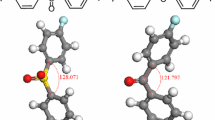Abstract
Proton exchange membranes based on fluorinated poly(ether sulfone)s with disulfonated naphthyl pendants (sSPFES) have been successfully prepared by post functionalization through polymeric SNAr reaction. Copolymer structure was confirmed by H-nuclear magnetic resonance spectroscopy and Fourier transform infrared spectroscopy, the physico-chemical properties of the sSPFES membranes were evaluated by thermogravimetric analysis, gel permeation chromatography, electro-chemical impedance spectroscopy, atomic force microscopy, Fenton, water-swelling and fuel cell test. The pendant grafting degree was controlled by varying the feeding amount of the disulfonaphthols, resulting in the ion exchange capacity about 1.28-1.73 mmol/g. The obtained sSPFES membranes were thermal stable, mechanical ductile, and exhibited dimensional change less than 17%, water uptake below 70%, and proton conductivity as high as 0.17-0.28 S/cm at 90°C in water. In a single H2/O2 fuel cell test at 80°C, the sSPFES-B-3.2 membrane (1.61 mmol/g) showed the maximum power output of 593–658 mW/cm2 at 60%-80% relative humidity, indicating their rather promising potential for fuel cell applications.
Similar content being viewed by others
References
Dresselhaus M S, Thomas I L. Alternative energy technologies. Nature, 2001, 414(6861): 332–337
Hickner M A, Ghassemi H, Kim Y S, et al. Alternative polymer systems for proton exchange membranes (PEMs). Chemical Reviews, 2004, 104(10): 4587–4612
Millichamp J, Mason T J, Neville T P, et al. Mechanisms and effects of mechanical compression and dimensional change in polymer electrolyte fuel cells–A review. Journal of Power Sources, 2015, 284: 305–320
Sutou Y, Yin Y, Hu Z, et al. Synthesis and properties of sulfonated polyimides derived from bis(sulfophenoxy) benzidines. Journal of Polymer Science Part A: Polymer Chemistry, 2009, 47(5): 1463–1477
Lafitte B, Jannasch P. Proton-conducting aromatic polymers carrying hypersulfonated side chains for fuel cell applications. Advanced Functional Materials, 2007, 17(15): 2823–2834
Hu Z, Lu Y, Zhang X, et al. Poly(arylene ether)s bounded with disulfonaphthoxyl pendants by post functionalization for polymer electrolyte membrane application in fuel cells. International Journal of Hydrogen Energy, 2017, 42(17): 12064–12075
Bi H, Wang J, Chen S, et al. Preparation and properties of crosslinked sulfonated poly(arylene ether sulfone)/sulfonated polyimide blend membranes for fuel cell application. Journal of Membrane Science, 2010, 350(1–2): 109–116
Zhang X, Hu Z, Pu Y, et al. Preparation and properties of novel sulfonated poly(p-phenylene-co-aryl ether ketone)s for polymer electrolyte fuel cell applications. Journal of Power Sources, 2012, 216: 261–268
Lee H S, Roy A, Lane O, et al. Hydrophilic–hydrophobic multiblock copolymers based on poly(arylene ether sulfone) via low-temperature coupling reactions for proton exchange membrane fuel cells. Polymer, 2008, 49(3): 715–723
Roy A, Lee H S, McGrath J E. Hydrophilic–hydrophobic multiblock copolymers based on poly(arylene ether sulfone)s as novel proton exchange membranes–Part B. Polymer, 2008, 49 (23): 5037–5044
Hu Z, Tang W, Zhang X, et al. Multiblock sulfonated poly(arylene ether sulfone)s with fluorenyl hydrophilic moieties for PEMFC applications. Journal of Polymer Research, 2016, 23(11): 230–239
He Q, Xu T, Qian H, et al. Enhanced proton conductivity of sulfonated poly(p-phenylene-co-aryl ether ketone) proton exchange membranes with controlled microblock structure. Journal of Power Sources, 2015, 278: 590–598
Jutemar E P, Takamuku S, Jannasch P. Sulfonated poly(arylene ether sulfone) ionomers containing di- and tetrasulfonated arylenesulfone segments. Polymer Chemistry, 2010, 2(1): 181–191
Kreuer K D, Paddison S J, Spohr E, et al. Transport in proton conductors for fuel-cell applications: simulations, elementary reactions, and phenomenology. Chemical Reviews, 2004, 104 (10): 4637–4678
Shao K, Zhu J, Zhao C, et al. Naphthalene-based poly(arylene ether ketone) copolymers containing sulfobutyl pendant groups for proton exchange membranes. Journal of Polymer Science Part A: Polymer Chemistry, 2009, 47(21): 5772–5783
Mauritz K A, Moore R B. State of understanding of nafion. Chemical Reviews, 2004, 104(10): 4535–4586
Zhang X, Hu Z, Zhang S, et al. Preparation and properties of crosslinked multiblock sulfonated poly(arylene ether sulfone) membranes for fuel cell applications. Journal of Applied Polymer Science, 2011, 121(3): 1707–1716
Wang G, Weng Y, Chu D, et al. Developing a polysulfone-based alkaline anion exchange membrane for improved ionic conductivity. Journal of Membrane Science, 2009, 332(1–2): 63–68
Kim Y S, Lee K S. Fuel cell membrane characterizations. Polymer Reviews, 2015, 55(2): 330–370
Marrony M, Barrera R, Quenet S, et al. Durability study and lifetime prediction of baseline proton exchange membrane fuel cell under severe operating conditions. Journal of Power Sources, 2008, 182(2): 469–475
Liu L, Chen W, Li Y. An overview of the proton conductivity of nafion membranes through a statistical analysis. Journal of Membrane Science, 2016, 504: 1–9
Zhuo Y Z, Lai A N, Zhang Q G, et al. Highly ionic-conductive crosslinked cardo poly(arylene ether sulfone)s as anion exchange membranes for alkaline fuel cells. Journal of Membrane Science, 2015, 491: 138–148
Borup R, Meyers J, Pivovar B, et al. Scientific aspects of polymer electrolyte fuel cell durability and degradation. Chemical Reviews, 2007, 107(10): 3904–3951
Nakabayashi K, Higashihara T, Ueda M. Highly sulfonated multiblock copoly(ether sulfone)s for fuel cell membranes. Journal of Polymer Science Part A: Polymer Chemistry, 2010, 48(13): 2757–2764
Acknowledgements
We gratefully thank the National Natural Science Foundation of China (Grant Nos. 21276128 and 21006052) and the Basic Research Program of Jiangsu Province of China (BK20141398) for the financial supports.
Author information
Authors and Affiliations
Corresponding authors
Rights and permissions
About this article
Cite this article
Hu, Z., Lu, Y., Zhang, X. et al. Fluorinated poly(ether sulfone) ionomers with disulfonated naphthyl pendants for proton exchange membrane applications. Front. Mater. Sci. 12, 156–167 (2018). https://doi.org/10.1007/s11706-018-0418-z
Received:
Accepted:
Published:
Issue Date:
DOI: https://doi.org/10.1007/s11706-018-0418-z




